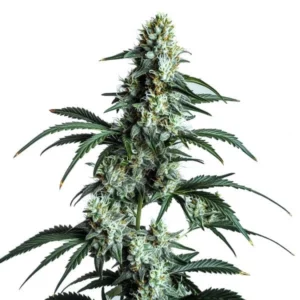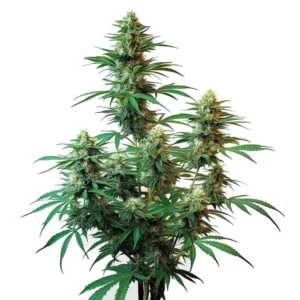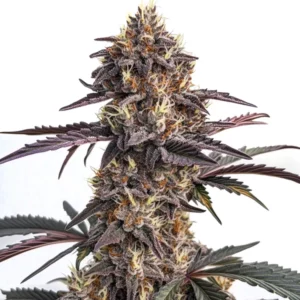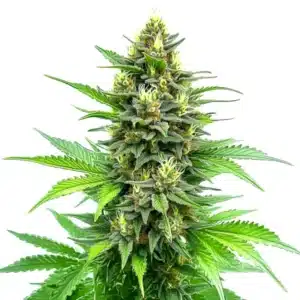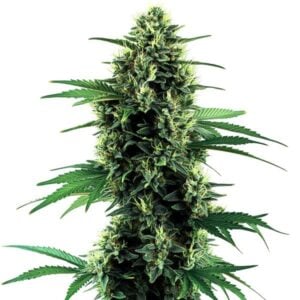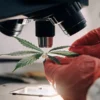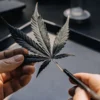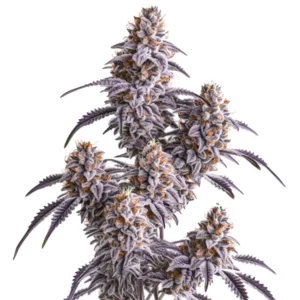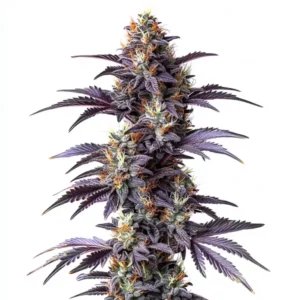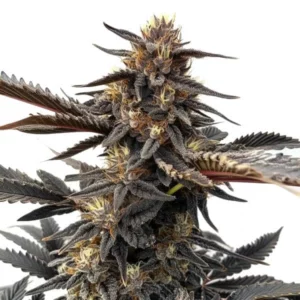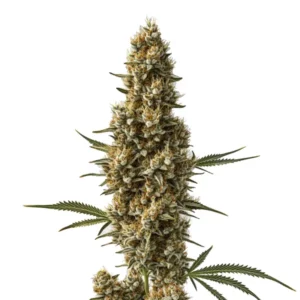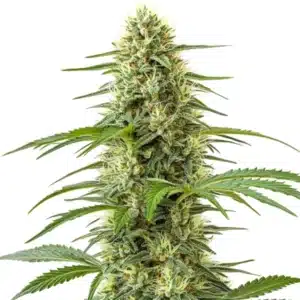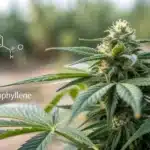
Is Weed a Stimulant or Depressant?
Cannabis, often referred to as weed, is a fascinating and complex plant that has sparked considerable debate and research. One of the most frequently asked questions is, “is weed a stimulant or depressant?” This question is not as straightforward as it might seem because cannabis can exhibit properties of both stimulants and depressants, depending on various factors including the strain, dosage, and individual physiology. This article will explore the nuances of cannabis’s effects, particularly in the context of its impact on mental health and well-being.
What Are Stimulants and Depressants?
To fully understand the question “is weed a stimulant or depressant,” it’s essential to delve into the definitions and characteristics of stimulants and depressants. These categories of substances influence the central nervous system (CNS) in markedly different ways, resulting in distinct effects on the body and mind. A related and commonly asked question is “is THC a stimulant?” which helps further clarify how cannabis interacts with the CNS depending on dosage, strain, and individual physiology.
Recommended Strains
Sour Diesel
|
|
THC | 22% - 25% (Medium) |
|
|
Type | Feminized |
|
|
Yield | High |
|
|
Phenotype | 30% Indica / 70% Sativa |
Sour Diesel Autoflower
|
|
THC | 16% - 23% (Medium) |
|
|
Type | Autoflowering |
|
|
Yield | Low |
|
|
Phenotype | 40% Indica / 60% Sativa |
Is Weed a Stimulant or Depressant? – Stimulants
Stimulants are substances that increase the activity of the brain and the central nervous system. This heightened activity leads to various physiological and psychological effects that can make a person feel more alert, energetic, and awake. The primary mode of action for stimulants is the enhancement of neurotransmitter activity in the brain, particularly involving dopamine and norepinephrine.
Common Characteristics of Stimulants:
- Increased Alertness and Energy: Stimulants boost mental and physical energy, making individuals feel more awake and less fatigued.
- Enhanced Focus and Concentration: Many stimulants improve attention span and cognitive function, which is why they are sometimes used to treat attention deficit hyperactivity disorder (ADHD).
- Euphoria and Mood Elevation: Some stimulants can produce feelings of euphoria by increasing dopamine levels in the brain, contributing to a temporary improvement in mood.
- Decreased Appetite: Stimulants often suppress appetite, which can lead to weight loss with prolonged use.
Examples of Common Stimulants:
- Caffeine: Found in coffee, tea, and many soft drinks, caffeine is the most widely used stimulant worldwide. It blocks adenosine receptors in the brain, preventing the onset of drowsiness.
- Nicotine: The primary psychoactive component in tobacco, nicotine increases the release of neurotransmitters like dopamine and acetylcholine, leading to increased alertness and a feeling of reward.
- Amphetamines: Used medically to treat ADHD and narcolepsy, amphetamines increase the release of dopamine and norepinephrine, enhancing focus, alertness, and energy.
- Cocaine: A powerful and illegal stimulant, cocaine increases levels of dopamine by preventing its reuptake in the brain, leading to intense euphoria and heightened energy.
Is Weed a Stimulant or Depressant? – Depressants
Depressants, in contrast to stimulants, reduce the activity of the brain and the central nervous system. This reduction in activity can lead to a calming effect on the body and mind, often inducing relaxation, drowsiness, and in some cases, sleep. Depressants work primarily by enhancing the activity of gamma-aminobutyric acid (GABA), a neurotransmitter that inhibits brain activity. When exploring the question Is Weed a Stimulant or Depressant, it’s important to understand how substances like cannabis interact with these systems.
Common Characteristics of Depressants:
- Calming and Relaxation: Depressants can reduce anxiety and stress, leading to a sense of calm and relaxation.
- Sedation and Drowsiness: These substances can induce drowsiness and help with sleep, which is why they are often prescribed for insomnia.
- Muscle Relaxation: Many depressants have muscle relaxant properties, helping to alleviate muscle tension and spasms.
- Impairment of Motor Skills and Cognitive Function: High doses of depressants can impair coordination, judgment, and cognitive function, which can be dangerous when performing tasks like driving.
Examples of Common Depressants:
- Alcohol: One of the most widely used depressants, alcohol enhances the effects of GABA, leading to relaxation, reduced inhibitions, and, in higher doses, sedation.
- Benzodiazepines: Medications like diazepam (Valium) and alprazolam (Xanax) are prescribed to treat anxiety, insomnia, and seizures. They increase GABA activity, providing calming effects.
- Barbiturates: Once commonly prescribed for anxiety and insomnia, barbiturates have largely been replaced by benzodiazepines due to their higher risk of overdose. They also enhance GABA activity.
- Opioids: While primarily used for pain relief, opioids like morphine and oxycodone can also produce calming effects and sedation. They act on opioid receptors in the brain to reduce pain and induce euphoria.
Is Weed a Stimulant or Depressant? – How Stimulants and Depressants Affect the Body
Stimulants:
- Short-Term Effects: Increased heart rate, elevated blood pressure, reduced appetite, heightened alertness, and improved mood.
- Long-Term Effects: Prolonged use of stimulants can lead to dependence, cardiovascular issues, anxiety, and potential for addiction. Chronic use can also result in insomnia and weight loss.
- Withdrawal Symptoms: Fatigue, depression, increased appetite, and disrupted sleep patterns.
Depressants:
- Short-Term Effects: Lowered heart rate, reduced blood pressure, relaxation, drowsiness, and impaired coordination.
- Long-Term Effects: Extended use of depressants can lead to tolerance, dependence, cognitive impairment, and potential overdose. Chronic use can also cause memory problems and mood swings.
- Withdrawal Symptoms: Anxiety, tremors, seizures, insomnia, and in severe cases, delirium and death.
Is Weed a Stimulant or Depressant? – The Dual Nature of Cannabis
Is Weed a Stimulant or Depressant? Cannabis does not fit neatly into either category. Its effects can vary greatly depending on the strain, cannabinoid content, and individual user characteristics.
- Sativa Strains: Typically associated with stimulating effects, these strains can increase energy, enhance focus, and elevate mood, similar to traditional stimulants.
- Indica Strains: Known for their relaxing and sedative effects, Indica strains can reduce anxiety, aid sleep, and provide muscle relaxation, akin to depressants.
- Hybrid Strains: These strains combine properties of both Sativa and Indica, offering a balance of stimulation and relaxation.
Cannabinoids:
- THC: At low doses, THC can act as a stimulant, producing euphoria and increased energy. At higher doses, it can have depressant effects, leading to relaxation and sedation.
- CBD: Generally, CBD has calming and anti-anxiety effects without significant sedation, making it more similar to a mild depressant.
The dual nature of cannabis helps in recognizing its versatile applications and tailoring its use to individual needs. Whether seeking relief from depression, anxiety, or simply looking for a mood boost, selecting the right strain and dosage is crucial for achieving the desired effects.
Promos & Deals
Is Weed a Stimulant or Depressant?
Cannabis does not fit neatly into the categories of stimulant or depressant. Instead, it exhibits a spectrum of effects that can vary widely based on several factors:
- Strain of Cannabis: Different strains of cannabis have different chemical compositions, particularly in terms of their cannabinoid and terpene profiles. Sativa strains are often associated with stimulating effects, making users feel more alert and energetic. Indica strains, however, are more likely to produce sedative and calming effects, similar to those of depressants.
- Cannabinoid Content: The two primary cannabinoids in cannabis are THC (tetrahydrocannabinol) and CBD (cannabidiol). THC is the psychoactive component that can produce stimulating effects at lower doses but can act as a depressant at higher doses. CBD is non-psychoactive and is generally associated with calming, anti-anxiety effects.
- Dosage: The amount of cannabis consumed can significantly influence whether its effects are more stimulating or depressing. Low to moderate doses of THC might lead to stimulation, while higher doses can cause sedation and drowsiness.
- Individual Differences: Each person’s reaction to cannabis can vary based on their unique physiology, tolerance levels, and mental state at the time of consumption. Some people might experience a burst of energy and creativity, while others might feel relaxed and sleepy.
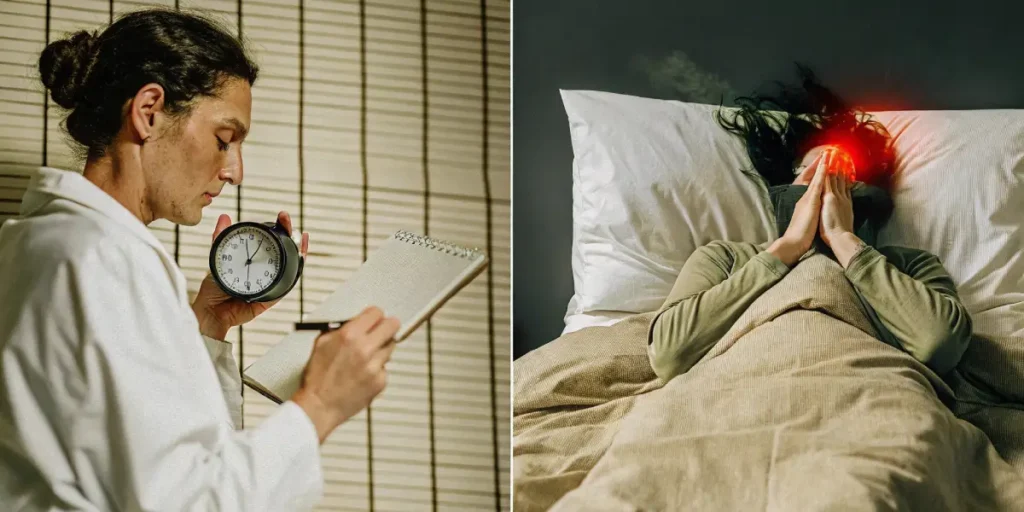
The Best Strain of Weed for Depression
When it comes to managing depression with cannabis, selecting the right strain is crucial. Each strain has unique properties that can influence mood and energy levels differently. Many people exploring whether Is Weed a Stimulant or Depressant often seek strains that offer uplifting effects without anxiety. Below, we’ll explore more about the best strain of weed for depression and list at least five strains known for their potential benefits in alleviating depressive symptoms.
Factors to Consider
- Cannabinoid Profile: Strains with balanced levels of THC and CBD are often preferred for managing depression. THC can provide mood elevation, while CBD offers calming effects without significant psychoactivity.
- Terpene Profile: spray Terpenes like limonene and linalool can enhance the mood-boosting effects of cannabis. Limonene is known for its uplifting properties, while linalool provides relaxation.
- Personal Response: Individual responses to cannabis can vary widely. It’s essential to start with small doses to understand how a particular strain affects you.
Top Strains for Depression
Sour Diesel
- Type: Sativa-dominant
- Cannabinoid Profile: High THC, low CBD
- Effects: Sour Diesel is renowned for its energizing and uplifting effects, making it a popular choice for those looking to alleviate symptoms of depression. Its strong cerebral high can help improve mood and increase focus and creativity.
Jack Herer
- Type: Sativa-dominant
- Cannabinoid Profile: High THC, moderate CBD
- Effects: Named after the famous cannabis activist, Jack Herer offers a blissful, clear-headed high that can boost mood and energy. It’s ideal for daytime use when you need to stay productive and positive.
Green Crack
- Type: Sativa-dominant
- Cannabinoid Profile: High THC, low CBD
- Effects: Despite its intense name, Green Crack provides a clean and energizing high that can help combat fatigue and depression. It’s known for its ability to keep users alert and uplifted.
Granddaddy Purple
- Type: Indica-dominant
- Cannabinoid Profile: High THC, low CBD
- Effects: Granddaddy Purple is perfect for those whose depression is accompanied by significant anxiety and insomnia. Its potent relaxing effects can help reduce stress and promote a restful night’s sleep.
Northern Lights
- Type: Indica-dominant
- Cannabinoid Profile: High THC, low CBD
- Effects: Known for its strong relaxing properties, Northern Lights can be incredibly effective for those dealing with anxiety and depression. It offers a calming and sedative effect that can help ease mental distress.
Blue Dream
- Type: Hybrid (Sativa-dominant)
- Cannabinoid Profile: High THC, moderate CBD
- Effects: Blue Dream is a well-balanced strain that provides the cerebral stimulation of a Sativa with the full-body relaxation of an Indica. It’s highly regarded for its ability to relieve stress and depression without heavy sedation.
Harlequin
- Type: Sativa-dominant
- Cannabinoid Profile: High CBD, moderate THC
- Effects: Harlequin is known for its high CBD content, making it ideal for those seeking relief from depression without strong psychoactive effects. It provides a clear-headed high and a sense of calm.
How to Choose the Right Strain
Choosing the right strain can involve some trial and error. Here are a few tips to help guide your selection:
- Start Low, Go Slow: Begin with a low dose and gradually increase until you find the optimal amount that alleviates your symptoms without causing adverse effects.
- Track Your Experience: Keep a journal of the strains you try, their effects, and how they make you feel. This can help you identify patterns and find the most effective strains for your needs.
- Consult Professionals: Consider speaking with a healthcare provider or a knowledgeable budtender at a dispensary. They can offer personalized recommendations based on your symptoms and experiences.
When considering the best strain of weed for depression, it’s essential to recognize that cannabis’s effects can vary widely between individuals. This ties into the broader question: Is Weed a Stimulant or Depressant? The answer depends on the strain and the user’s response. Sativa-dominant strains like Sour Diesel, Jack Herer, and Green Crack can provide uplifting and energizing effects, which are beneficial for those experiencing fatigue and low mood. Indica-dominant strains like Granddaddy Purple and Northern Lights offer relaxation and stress relief, ideal for those with anxiety and insomnia associated with depression. Hybrid strains like Blue Dream, Canna-Tsu, and Harlequin provide balanced effects that can help in managing both mood and anxiety.
The nuanced effects of different cannabis strains allows individuals to make informed decisions tailored to their unique needs and responses. For more detailed information on how cannabis can interact with mental health treatments, you might find this external resource helpful.
By exploring various strains and paying close attention to their effects, users can find the best options to support their mental well-being and enhance their quality of life.
How Cannabis Interacts with the Brain
To understand why cannabis can act as both a stimulant and a depressant, it’s helpful to look at how it interacts with the brain. Cannabis contains over 100 different cannabinoids, with THC and CBD being the most prominent. These cannabinoids interact with the endocannabinoid system (ECS), a complex cell-signaling system involved in regulating a range of functions and processes, including mood, sleep, and appetite.
THC: THC binds to CB1 receptors in the brain, producing the classic “high” associated with cannabis. This interaction can lead to increased dopamine release, which is why low to moderate doses of THC can have stimulating and euphoric effects. However, at higher doses, THC’s interaction with these receptors can lead to feelings of sedation and relaxation.
CBD: Unlike THC, CBD does not have a strong binding affinity for CB1 receptors. Instead, it influences the ECS by increasing the availability of endocannabinoids like anandamide, which can enhance mood and reduce anxiety. CBD’s calming effects make it more akin to a depressant, although it lacks the sedative properties typically associated with depressants like alcohol or benzodiazepines.
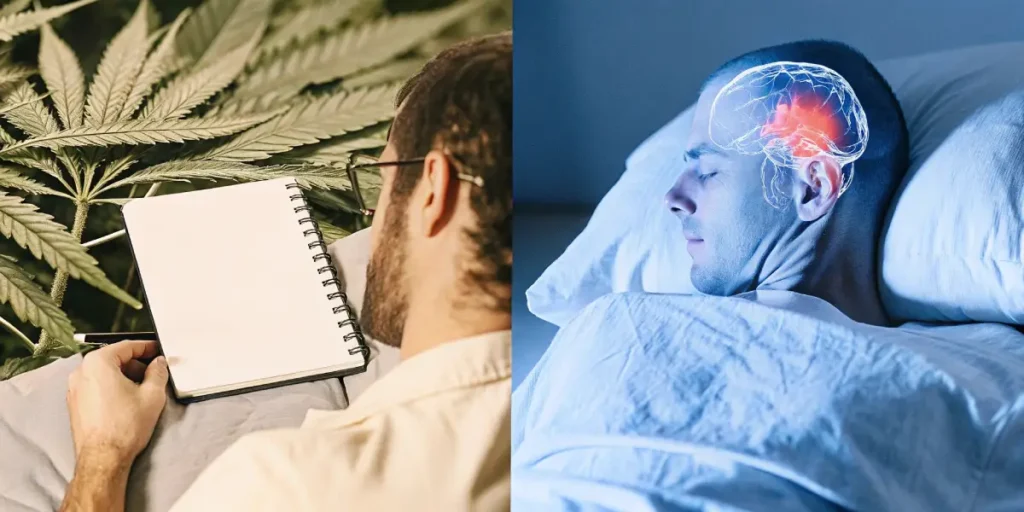
How spray Terpenes Influence Cannabis
In addition to cannabinoids, terpenes play a significant role in determining the effects of different cannabis strains. spray Terpenes are aromatic compounds found in many plants, including cannabis, and they contribute to the plant’s flavor and aroma. More importantly, terpenes can interact with cannabinoids and influence the overall effects of the strain.
For instance:
- Limonene: Often found in citrus fruits, limonene has uplifting and mood-enhancing properties. Strains high in limonene, such as Super Lemon Haze, are often recommended for depression.
- Myrcene: This terpene has sedative and relaxing effects. Strains high in myrcene, like Blue Dream and OG Kush, are often used for their calming properties.
- Linalool: Known for its floral scent, linalool has anti-anxiety and sedative effects, making it beneficial for individuals dealing with stress and insomnia.
Frequently Asked Questions
Is weed a stimulant or depressant?
Cannabis can act as both a stimulant and a depressant depending on the strain, dosage, and individual physiology. For those wondering is weed a depressant, the answer depends on the specific type and how it’s used. Sativa strains tend to be more stimulating, while Indica strains are often more sedative.
What are stimulants?
Stimulants are substances that increase brain and central nervous system activity, leading to heightened alertness, energy, and euphoria. Examples include caffeine and amphetamines.
What are depressants?
Depressants reduce activity in the brain and central nervous system, promoting relaxation, drowsiness, and calmness. Common examples include alcohol and benzodiazepines.
Can cannabis be used to treat depression?
Some strains of cannabis, particularly Sativa-dominant and hybrid strains, may help alleviate symptoms of depression by boosting mood and energy levels.
What are the best strains of weed for depression?
Some of the best strains for depression include Sour Diesel, Jack Herer, Green Crack, Granddaddy Purple, Northern Lights, Blue Dream, Canna-Tsu, and Harlequin.
How do THC and CBD affect the body?
THC can act as both a stimulant and a depressant depending on the dose, while CBD generally has calming and anti-anxiety effects without significant sedation.
What role do terpenes play in cannabis effects?
Spray Terpenes, like limonene and linalool, contribute to the aroma and flavor of cannabis and can influence its effects, enhancing mood or promoting relaxation.


